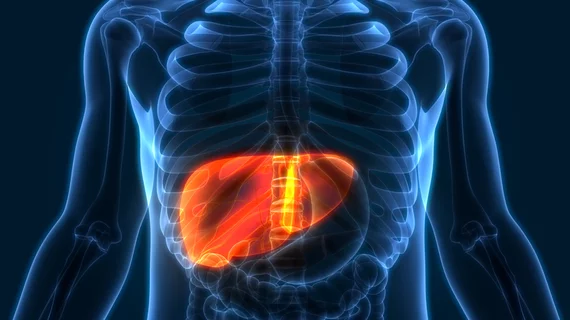Incorrect CT protocol leads to radiologist overlooking liver cancer, patient’s untimely death
Government authorities are faulting a radiologist for missing liver cancer on the medical images of two different individuals, resulting in one patient’s death and the other’s terminal cancer diagnosis.
New Zealand’s Health and Disability Commissioner Morag McDowell highlighted the diagnostic errors in separate reports issued Monday, July 24. In the first instance, miscommunication led to a radiographer performing the wrong CT protocol. Unnamed radiologist “Dr. B” reported the liver mass as not cancerous. But the man in his 70s returned one year later for recommended follow-up in January 2019, learning he had liver cancer that had spread to other parts of the body, leading to his eventual death.
“The commissioner found that the radiologist did not provide services with reasonable care and skill, in that he did not correct the incomplete CT protocol when he became aware that the imaging was inadequate and noncompliant with the expected standard for liver imaging…,” the report noted, listing several other mistakes. “These significant failings meant that a further scan was not undertaken until 12 months later, which resulted in an unacceptable delay in the diagnosis of cancer.”
The patient underwent an abdominal and pelvic CT at New Zealand’s Southland Hospital in January 2018. Dr. B was tasked with prioritizing the day’s scans and selecting protocols for each patient, with the regular radiologist who handled these duties away on leave. During the investigation, Dr. B told authorities that he had assigned the standard, four-phase protocol for liver imaging. However, he relayed this request to the radiographer verbally with no written documentation—the organization’s established practice at the time, when using the standard protocol for a disease.
The radiographer instead performed a single, portal-venous phase only.
“I cannot explain why [Dr B] did not suggest a CT liver protocol given that the request form specified this. I also cannot explain why, given the appearance, the patient was not rescanned with the appropriate protocol,” another physician told authorities during the investigation.
Dr. B realized that he did not have enough information to complete the diagnosis and requested a delay phase to characterize the case further. He incorrectly labeled the lesion as a benign, noncancerous tumor, called a haemangioma.
“The subtle filling in on the delay phase was misleading me to the wrong diagnosis. It was a mistake and very wrong decision to add a delay phase in this type [of] study; the delay phase likely deceived me to [the] wrong diagnosis by thinking of the liver haemangioma,” the radiologist said in the report.
In the second case, the same radiologist in 2018 interpreted an MRI for an individual who had experienced stomach pain. Dr. B again diagnosed a liver lesion as benign, requiring no further follow up. The man returned in 2019 with continuing stomach pain. An ultrasound identified a substantial increase in the size of the lesion, and an internal multidisciplinary radiology meeting determined that the MRI read by Dr. B in 2018 was consistent with liver cancer. The man was later diagnosed with a terminal stage of the disease, which also had spread to his pancreas. Authorities indicated that the patient, “Mr. A,” “feels strongly” that the radiologist “should be held accountable for not having interpreted the imaging correctly.”
“The commissioner acknowledged the Medical Council of New Zealand’s review of the radiologist’s practice, and recommended that in addition, the radiologist provide a written apology; provide evidence that he has familiarized himself with the various radiological manifestations of liver cancer; participate in formal double reading; use a checklist when reporting liver MRIs; and provide recent copies of radiology reports that show compliance with relevant guidelines,” the second report noted.
Dr. B said that, at the time of the MRI misread, he was reporting upward of 65 mixed cases a day across both public and private practice. He had faced a heavy workload and was the only radiologist reading magnetic resonance imaging exams when the incident occurred. He also was suffering from severe pain, which required surgery and had impacted his sleep and performance, according to the report.
“Any workload or interruption can result in an error in the reporting or misdiagnosis of a lesion. When overloaded, you lose the adequate timing that is required for reporting, and as a result, the quality of reporting reduces,” Dr. B said.
Commissioner McDowell blamed the radiologist in both instances while also criticizing his organization for the “unacceptable delay in commencing an internal investigation into the radiologist’s misread” of the 2018 MRI. Authorities are determining whether to refer the cases to a court for further legal proceedings.
Dr. B no longer works for the Southern District Health Board, according to a press release issued Monday.

